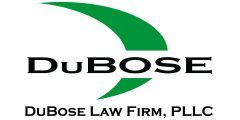Talc safety has been a concern for years. More recently, the clear possibility of asbestos contamination in talc has led to heightened concern about critical diseases, such as mesothelioma and ovarian cancer being caused by use of talc based products.
Why is asbestos connected to talc safety?
Both talc and asbestos are minerals found in underground mines. Geologists know that these two minerals are often found intertwined in veins, making cross-contamination a real risk.
Talc everyday uses
Aside from baby powder, talc is used in a wide range of cosmetics for its moisture absorption and silkiness. Recently asbestos was found in four cosmetic products from Claire’s and Justice – both catering to makeup for children. It was also used for feminine hygiene, crayons, children’s toys, chewing gum, and a plethora of common products. There is no safe level of asbestos as its microscopic fibers can infiltrate lungs and harbor the potential for developing into lung cancer, asbestosis, and the deadly mesothelioma for fifty years or more.
Congressional hearings on talc safety
Concerns recently grew when the FDA found asbestos in several products, including baby powder. An initial hearing was conducted in March of 2019 over cosmetic talcum powder’s safety. This hearing specifically focused on talc’s connection with ovarian cancer.
The second hearing was launched when the FDA found asbestos in a sample of Johnson & Johnson’s (J&J) baby powder in October 2019. Under consideration may be the use of warning labels or regulation of talc products.
Congress speaks
The hearing questioned the testing methods used. William Longo, founder of Materials Analytical Service, stated, “Independent labs throughout the country and over the course of several decades have documented the presence of asbestos in consumer talc products, including Johnson & Johnson’s baby powder. The methods used in the past and today by the industry are not sensitive enough to detect trace levels of asbestos.”
While Longo once denied the presence of asbestos in talc, he stated there is now more sensitive testing. He also received access to thousands of internal J & J documents showing their knowledge of small amounts of asbestos in their talc for decades. There is no safe level, yet J&J kept this information from regulators and the public. Protecting the J&J brand and the public trust of their products was their focus. They now have paid out billions of dollars in thousands of lawsuits with thousands more in process.
The House of Representatives Subcommittee on Economic and Consumer Policy tried to convince the CEO of Johnson & Johnson, Alex Gorsky, to testify at the hearing. He turned down the invitation.
Charles M. Elson, director of the John L. Weinberg Center for Corporate Governance at the University of Delaware, said Gorsky’s refusal made sense as the “CEO and his advisers probably figured that the downside was greater to testifying than not.”
